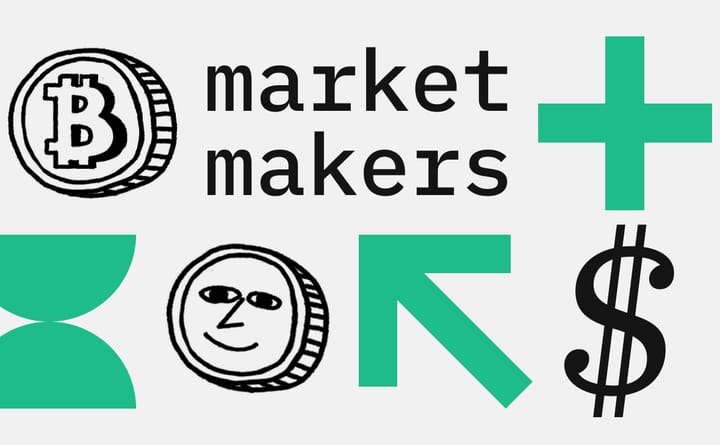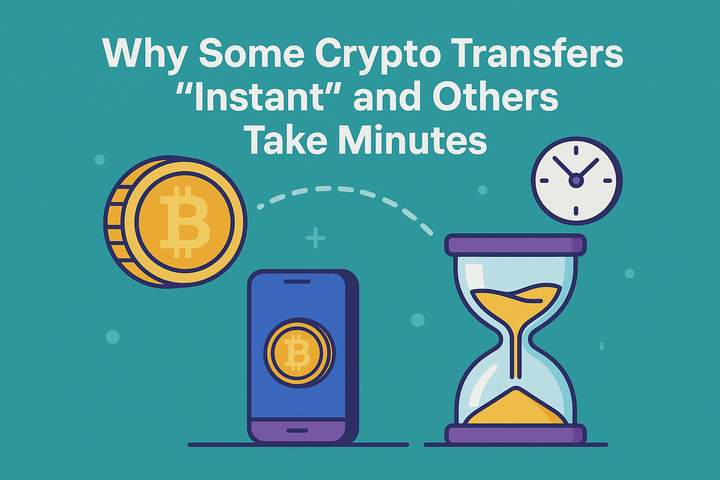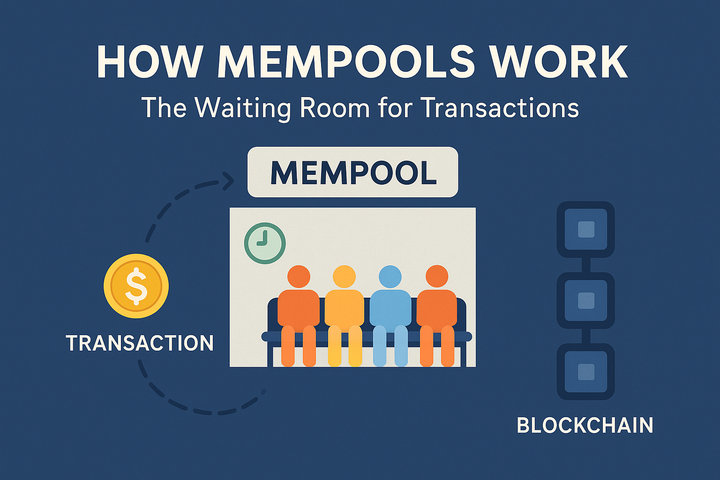Real-World Assets (RWAs) in DeFi: Tokenizing Bonds, Real Estate, and Treasury Bills

Introduction
The advent of decentralized finance (DeFi) has revolutionized the financial landscape, enabling users to engage in financial activities without intermediaries. One of the most promising developments within DeFi is the tokenization of real-world assets (RWAs). This process involves converting physical or traditional financial assets into digital tokens that can be traded on blockchain platforms. By tokenizing assets such as bonds, real estate, and treasury bills, DeFi protocols are enhancing liquidity, democratizing access to investment opportunities, and bridging the gap between traditional finance (TradFi) and the decentralized world.
In this article, we will explore the concept of RWAs in DeFi, examine key protocols like Ondo, Maple, and Goldfinch, and discuss the implications of tokenizing traditional assets. We will also delve into the benefits, challenges, and future trends associated with RWAs in the DeFi ecosystem.
1. Understanding Real-World Assets (RWAs)
1.1 Definition of RWAs
Real-World Assets (RWAs) refer to tangible or traditional financial assets that exist outside the blockchain ecosystem. These can include physical assets like real estate, commodities, and luxury goods, as well as financial instruments such as bonds and treasury bills. The tokenization of these assets allows them to be represented digitally on a blockchain, enabling easier trading, fractional ownership, and enhanced liquidity.
1.2 The Importance of Tokenization
Tokenization is the process of converting ownership rights of tangible assets into digital tokens that can be traded on blockchain platforms. This process offers several advantages:
- Fractional Ownership: Tokenization allows multiple investors to own a fraction of an asset, making high-value investments more accessible to a broader audience.
- Enhanced Liquidity: Tokenized assets can be easily traded, transferred, and verified on a decentralized network, increasing market liquidity.
- Transparency: Blockchain technology provides immutable records of ownership and transaction history, enhancing trust among investors.
- Reduced Costs: By eliminating intermediaries, tokenization can lower transaction costs and streamline processes.
- Global Accessibility: Tokenized assets can be accessed by anyone with an internet connection, breaking down geographical barriers.
2. Key Protocols in RWA Tokenization
Several DeFi protocols are leading the charge in tokenizing real-world assets. Below, we will examine three prominent protocols: Ondo, Maple, and Goldfinch.
2.1 Ondo Finance
Overview: Ondo Finance is a DeFi protocol focused on tokenizing U.S. Treasuries, providing real yield and global accessibility. The platform aims to bridge the gap between traditional finance and DeFi by offering a compliant and secure way to invest in government bonds.
Key Features:
- Tokenized Treasuries: Ondo allows users to invest in tokenized U.S. Treasuries, providing a stable yield that is attractive to both retail and institutional investors.
- Compliance and Custody: The platform integrates compliance and custody solutions to ensure regulatory adherence, making it easier for traditional investors to enter the DeFi space.
- Yield Generation: By tokenizing Treasuries, Ondo enables users to earn yield on their investments while maintaining the security and stability associated with government bonds.
Impact on DeFi: Ondo Finance is paving the way for the integration of traditional assets into the DeFi ecosystem, providing a reliable source of yield for investors and enhancing the overall credibility of DeFi.
2.2 Maple Finance
Overview: Maple Finance is a decentralized credit protocol that brings traditional debt markets on-chain. The platform facilitates the issuance and trading of tokenized bonds, allowing users to access private credit markets.
Key Features:
- On-Chain Debt Markets: Maple enables the creation of on-chain debt markets, allowing borrowers to issue tokenized bonds and lenders to invest in these instruments.
- Liquidity Pools: The platform features liquidity pools that provide capital to borrowers while offering attractive yields to lenders.
- Risk Assessment: Maple employs a unique risk assessment model to evaluate borrowers, ensuring that lenders can make informed decisions.
Impact on DeFi: By tokenizing bonds and facilitating private credit markets, Maple Finance is enhancing liquidity and accessibility in the DeFi space, attracting a diverse range of investors.
2.3 Goldfinch
Overview: Goldfinch is a decentralized credit protocol that aims to provide credit to emerging markets by tokenizing loans and other financial instruments. The platform focuses on compliance and risk management to attract institutional investors.
Key Features:
- Decentralized Credit: Goldfinch allows users to invest in loans issued to borrowers in emerging markets, providing much-needed capital to underserved communities.
- Compliance Framework: The platform has established a compliance framework to ensure that investments adhere to regulatory standards, making it more appealing to institutional investors.
- Community-Driven: Goldfinch leverages a community-driven approach to assess creditworthiness, allowing users to participate in the decision-making process.
Impact on DeFi: Goldfinch is democratizing access to credit in emerging markets, providing opportunities for investors while addressing the financing needs of underserved populations.
3. Benefits of Tokenizing Bonds
Tokenizing bonds offers several advantages that can transform the traditional bond market:
1. Accessibility
Tokenized bonds can be issued in smaller denominations, allowing a wider range of investors to participate. This democratization of access enables retail investors to invest in bonds that were previously only available to institutional players.
2. Real-Time Trading
Investors can trade tokenized bonds on decentralized exchanges, enhancing market accessibility and liquidity. This real-time trading capability allows investors to react quickly to market changes and manage their portfolios more effectively.
3. Automated Processes
Smart contracts can automate interest payments and maturity processes, making bond investments more manageable. This automation reduces administrative burdens and enhances efficiency in bond management.
4. Enhanced Transparency
The use of blockchain technology provides transparent records of ownership and transaction history, increasing trust among investors. This transparency can help mitigate fraud and enhance the overall integrity of the bond market.
5. Lower Costs
By eliminating intermediaries, tokenization can lower transaction costs associated with bond trading. This cost reduction can make bond investments more attractive to a broader range of investors.
4. Tokenizing Real Estate
The tokenization of real estate is another area where RWAs are making a significant impact. This process involves converting ownership rights of real estate properties into digital tokens that can be traded on blockchain platforms.
4.1 Benefits of Tokenizing Real Estate
- Market Transformation: Tokenization lowers entry costs and increases liquidity in the real estate market. Investors can purchase fractions of properties, diversifying their portfolios without needing large capital.
- Fractional Ownership: Tokenization allows multiple investors to own a piece of a property, making real estate investments more accessible. This fractional ownership model enables investors to diversify their portfolios and reduce risk.
- Continuous Income Streams: Rental payments can be automatically distributed to token holders, providing a steady income. This automation enhances the efficiency of property management and ensures timely payments to investors.
- Global Reach: Tokenized real estate can attract global investors, breaking down geographical barriers and expanding the pool of potential buyers.
- Transparency and Security: Blockchain technology provides transparent records of ownership and transaction history, enhancing trust among investors. This transparency can help mitigate fraud and enhance the overall integrity of the real estate market.
4.2 Challenges in Tokenizing Real Estate
While the benefits of tokenizing real estate are significant, there are also challenges to consider:
- Regulatory Compliance: Navigating the regulatory landscape can be complex, as different jurisdictions have varying laws regarding real estate ownership and investment.
- Valuation and Appraisal: Accurately valuing tokenized real estate can be challenging, as traditional appraisal methods may not apply to digital assets.
- Investor Education: Educating investors about the risks and benefits of tokenized real estate is crucial for widespread adoption. Many investors may be unfamiliar with blockchain technology and its implications for real estate investment.
- Technological Risks: Security vulnerabilities in smart contracts and potential market manipulation pose risks to investors. Ensuring the security of tokenized assets is paramount to building trust in the ecosystem.
5. Tokenizing Treasury Bills
Treasury bills (T-bills) are short-term government securities that are typically considered low-risk investments. Tokenizing T-bills can provide several advantages:
5.1 Benefits of Tokenizing Treasury Bills
- Stable Yield: Tokenized T-bills can offer a stable yield, making them an attractive investment option for risk-averse investors.
- Liquidity: Tokenized T-bills can be traded on decentralized exchanges, enhancing liquidity and allowing investors to buy and sell their holdings easily.
- Global Accessibility: Tokenized T-bills can be accessed by anyone with an internet connection, breaking down geographical barriers and expanding the pool of potential investors.
- Automated Processes: Smart contracts can automate interest payments and maturity processes, making T-bill investments more manageable.
- Transparency: Blockchain technology provides transparent records of ownership and transaction history, enhancing trust among investors.
5.2 Challenges in Tokenizing Treasury Bills
- Regulatory Compliance: Ensuring compliance with existing laws and regulations is crucial for the successful tokenization of T-bills. Navigating the regulatory landscape can be complex.
- Market Acceptance: Gaining acceptance from traditional investors and institutions may take time, as they may be hesitant to embrace new technologies.
- Technological Risks: Security vulnerabilities in smart contracts and potential market manipulation pose risks to investors. Ensuring the security of tokenized assets is paramount to building trust in the ecosystem.
6. Future Trends in RWAs
As the DeFi landscape continues to evolve, several trends are emerging in the tokenization of real-world assets:
1. Stablecoin Yield Products
Tokenized Treasuries can serve as the backbone for stablecoin yield products, offering attractive yield opportunities for investors. This trend could lead to the creation of new financial instruments that combine the stability of traditional assets with the benefits of DeFi.
2. Real Estate-Backed DAOs
Decentralized Autonomous Organizations (DAOs) focused on real estate investments are likely to emerge, allowing investors to pool resources and invest in specific cities or neighborhoods. This trend could democratize access to real estate investments and enhance community engagement.
3. Luxury Asset Vaults
Tokenizing high-value items like cars, fine art, and collectibles could provide on-chain proof of ownership and facilitate trading in luxury markets. This trend could attract a new class of investors interested in alternative assets.
4. RWA ETFs and Indices
The creation of investment vehicles for DeFi investors to gain exposure to tokenized assets, such as exchange-traded funds (ETFs) and indices, could become more prevalent. This trend could simplify the investment process and attract a broader range of investors.
5. Enhanced Compliance Solutions
As the regulatory landscape continues to evolve, the development of enhanced compliance solutions for tokenized assets will be crucial. Protocols that prioritize compliance will be better positioned to attract institutional investors and gain mainstream acceptance.
Conclusion
The tokenization of real estate, bonds, and treasury bills represents a significant advancement in decentralized finance. By leveraging blockchain technology, RWAs provide enhanced liquidity, transparency, and accessibility to previously illiquid markets. As the financial landscape continues to evolve, the adoption of tokenized assets could reshape how individuals engage with traditional investments, paving the way for a more inclusive and efficient financial ecosystem.
The protocols leading the charge in RWA tokenization, such as Ondo, Maple, and Goldfinch, are setting the stage for a new era of finance that bridges the gap between traditional and decentralized systems. As these protocols continue to innovate and address the challenges associated with tokenization, the potential for RWAs in DeFi is vast.
Investors, regulators, and industry participants must work together to navigate the complexities of tokenization and ensure that the benefits of RWAs are realized while mitigating risks. The future of finance is being redefined, and RWAs are at the forefront of this transformation.
Further Reading and Resources
- How Tokenization of Real Estate and Bonds is Revolutionizing DeFi
- The Rise of Real-World Assets (RWAs): How Real Estate, Bonds, and Art Are Going On-Chain
- An Introduction to the Tokenisation of Real World Assets (RWAs)
- Real World Assets (RWAs) in Crypto: The Complete Guide
- The Great Tokenization: 2024 Update on RWA Tokenization



Comments ()